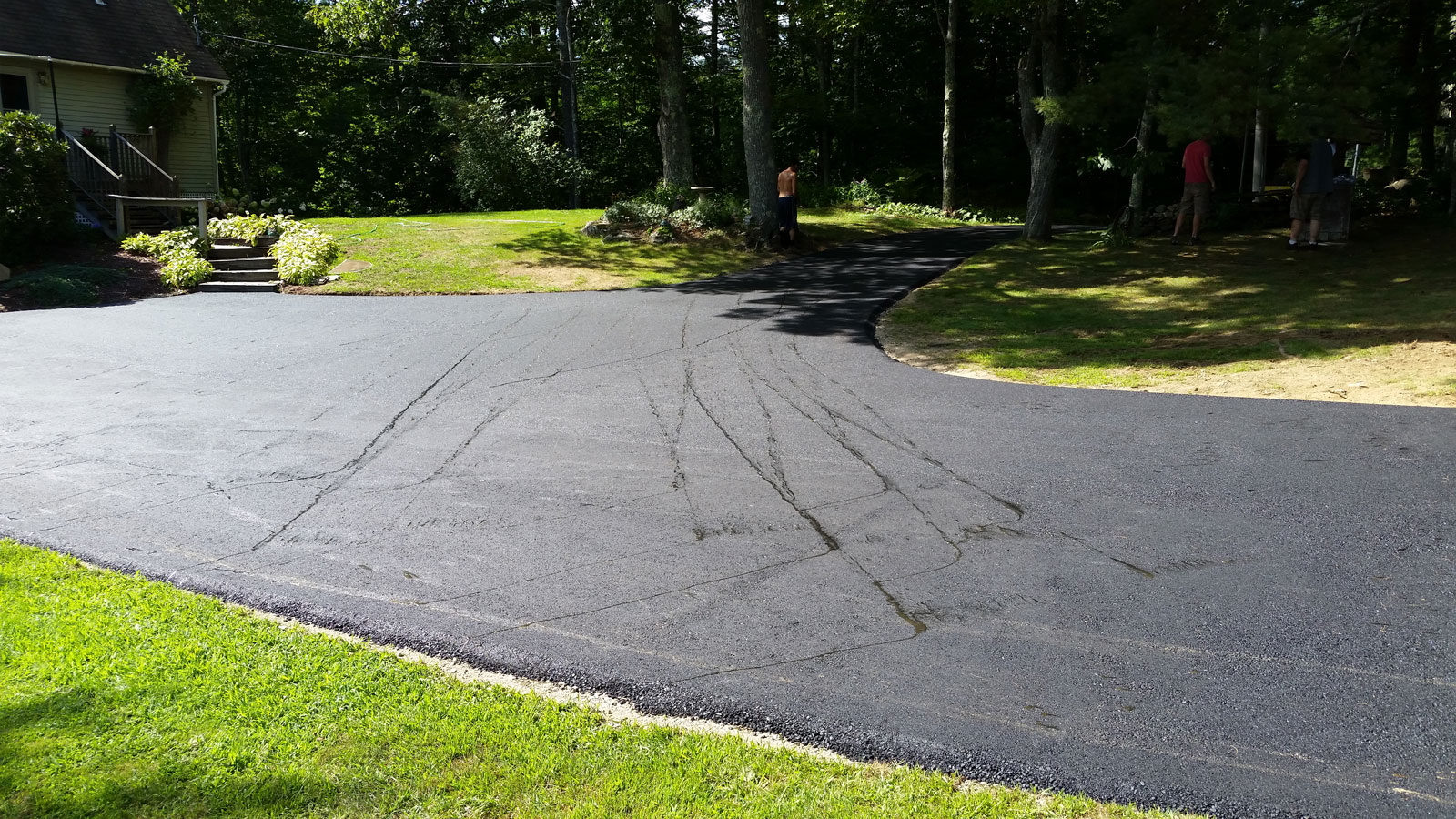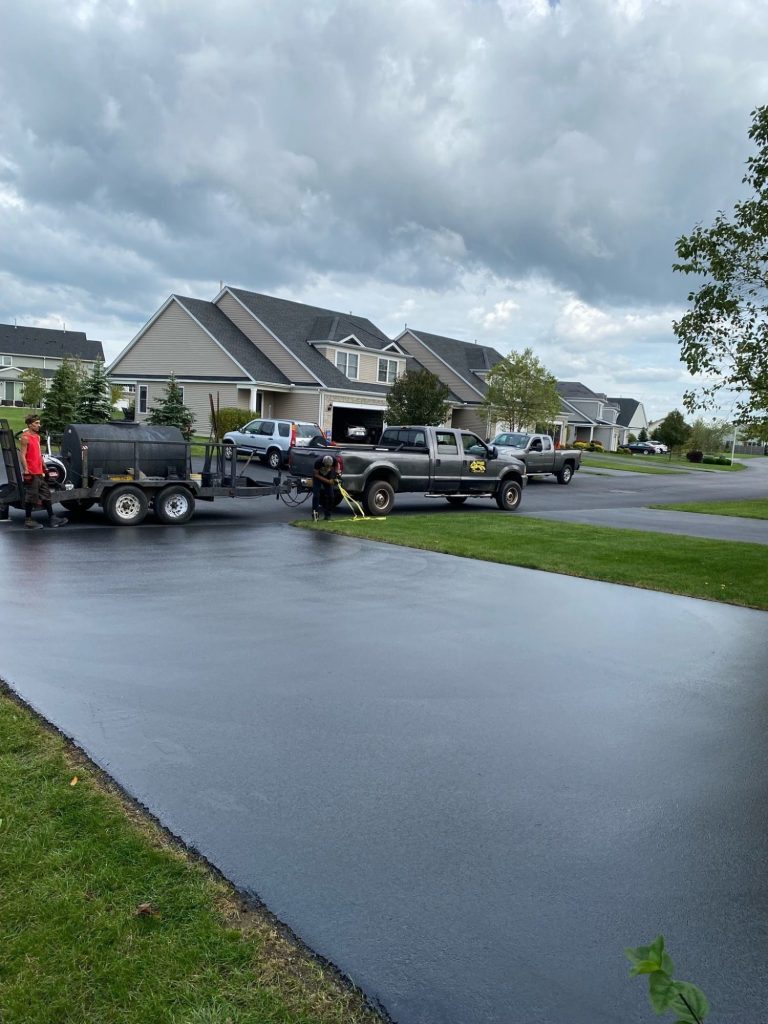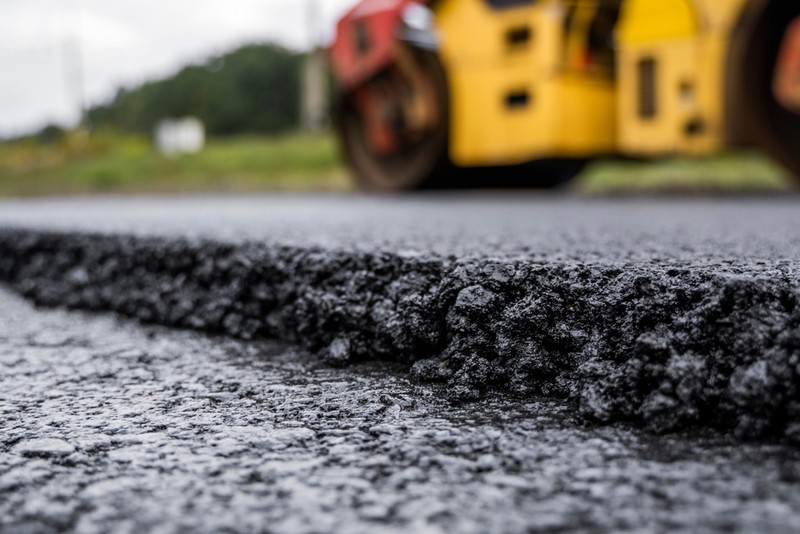Take Full Advantage Of Investment Returns: Angled Parking Area Perfection with Asphalt Sealing
Take Full Advantage Of Investment Returns: Angled Parking Area Perfection with Asphalt Sealing
Blog Article
Warm Mix Asphalt: A Lasting Solution for Pavement
Hot Mix Asphalt (HMA) has become a leading sustainable choice for sidewalk options, using a myriad of ecological advantages and ingenious technologies. Its capacity to reuse products and minimize power intake provides a compelling case for its fostering in road building and construction jobs. The long-lasting performance and resilience of HMA make it a preferred choice for framework development. As the demand for environmentally friendly building practices expands, checking out the nuances of HMA's sustainability can provide important insights right into the future of pavement remedies.
Environmental Advantages of Hot Mix Asphalt

In Addition, Warm Mix Asphalt assists to mitigate metropolitan warmth island impacts. Its dark shade absorbs sunshine, decreasing the quantity of heat showed back right into the atmosphere contrasted to lighter-colored sidewalks. This can lower ambient temperature levels in urban areas, reducing the need for air conditioning and eventually lowering energy usage.
Furthermore, Hot Mix Asphalt adds to boosted stormwater management. Its porous nature allows water to infiltrate the pavement and recharge groundwater materials, lowering drainage and the danger of flooding. These ecological advantages make Warm Mix Asphalt a lasting selection for leading roadways and freeways.
Power Efficiency in HMA Production
Is power efficiency an important aspect in the production of Warm Mix Asphalt (HMA)? Power plays a considerable duty in the production of HMA, affecting both expense and environmental sustainability. One crucial facet of energy performance in HMA manufacturing is the usage of warm mix asphalt (WMA) technologies.
Additionally, advancements in plant modern technologies have led to even more energy-efficient HMA production processes. Modern plants are made with functions like recycled asphalt sidewalk (RAP) processing capacities, reliable heater systems, and improved insulation, all adding to energy cost savings. By enhancing energy usage in HMA production, the market can reduce its carbon impact while keeping high-grade pavement products. Energy effectiveness is, therefore, an essential factor to consider in making sure the sustainability of Warm Mix Asphalt production.
Recyclability of Warm Mix Asphalt
The recyclability of Warm Mix Asphalt (HMA) is a pivotal aspect of its sustainability and lasting ecological impact. HMA is among one of the most recycled products in the USA, with over 100 million loads of recovered asphalt sidewalk (RAP) being recycled annually in new sidewalk building and construction. Recycling HMA offers a number of environmental advantages, such as decreasing the requirement for virgin products, reducing power intake throughout production, and decreasing the amount of waste sent to landfills.
The process of reusing HMA involves milling the existing pavement, crushing it right into smaller sized pieces, from this source and mixing it with new aggregate and asphalt binder to create a recycled mix. This recycled mix can typically carry out along with or even better than conventional HMA, while requiring less basic materials and producing reduced greenhouse gas discharges. By integrating RAP right into new sidewalk jobs, roadway companies can conserve natural deposits, minimize expenses, and reduce the environmental impact of road building and construction and maintenance tasks. Generally, the recyclability of HMA plays a considerable function in promoting sustainable practices within the sidewalk market.

Long-Term Performance of HMA
Asphalt pavements demonstrate toughness and durability over an extensive duration, showing the long-lasting efficiency of Hot Mix Asphalt (HMA) Additionally, innovations in HMA innovation, such as the use of polymer-modified binders and cozy mix asphalt, have further boosted the resilience and long life of HMA sidewalks. By prioritizing high quality construction and upkeep methods, HMA proceeds to confirm itself as a lasting and cost-effective solution for durable sidewalk framework.

HMA: Resilience and Sustainability
Showing both longevity and sustainability, Hot Mix Asphalt (HMA) has actually become a cornerstone in the building and construction of long-lasting pavement frameworks - commercial parking lot paving. HMA's resilience originates from its ability to hold up against hefty tons, harsh weather, and high web traffic quantities, making it a reliable option for streets, highways, and airport terminal runways. The make-up of HMA, which typically consists of aggregates, binder, and filler, plays a crucial function in boosting its longevity and resistance to tear and wear
Additionally, HMA's sustainability depends on its recyclability and energy-efficient production process. The capacity to reuse recovered asphalt sidewalk (RAP) in brand-new HMA combinations reduces the demand for virgin materials and lessens the ecological influence read more of pavement building and maintenance. Furthermore, the energy effectiveness of creating HMA depends on its lower blending temperatures contrasted to other sidewalk materials, bring about lowered power intake and greenhouse gas discharges.
Conclusion
To conclude, warm mix asphalt (HMA) uses a lasting option for sidewalk with its eco-friendly qualities. HMA's recyclability, power performance in manufacturing, and long-lasting durability make it an environmentally friendly option for roadway construction. By saving natural deposits, lowering waste, and reducing greenhouse gas exhausts, HMA plays a vital function in promoting sustainability in facilities development. Its capability to alleviate urban warmth island effects browse around this web-site further highlights its importance in producing resilient and environmentally conscious sidewalk systems.
HMA is one of the most recycled products in the United States, with over 100 million lots of recovered asphalt sidewalk (RAP) being recycled yearly in new pavement construction.The procedure of recycling HMA entails crushing the existing sidewalk, crushing it into smaller sized pieces, and mixing it with new aggregate and asphalt binder to produce a recycled mix.Asphalt sidewalks demonstrate longevity and resilience over an extended period, mirroring the long-term efficiency of Warm Mix Asphalt (HMA) Additionally, advancements in HMA innovation, such as the use of polymer-modified binders and warm mix asphalt, have even more improved the resilience and longevity of HMA sidewalks. The capability to reuse redeemed asphalt pavement (RAP) in brand-new HMA mixtures decreases the need for virgin products and lessens the ecological impact of sidewalk building and construction and maintenance.
Report this page